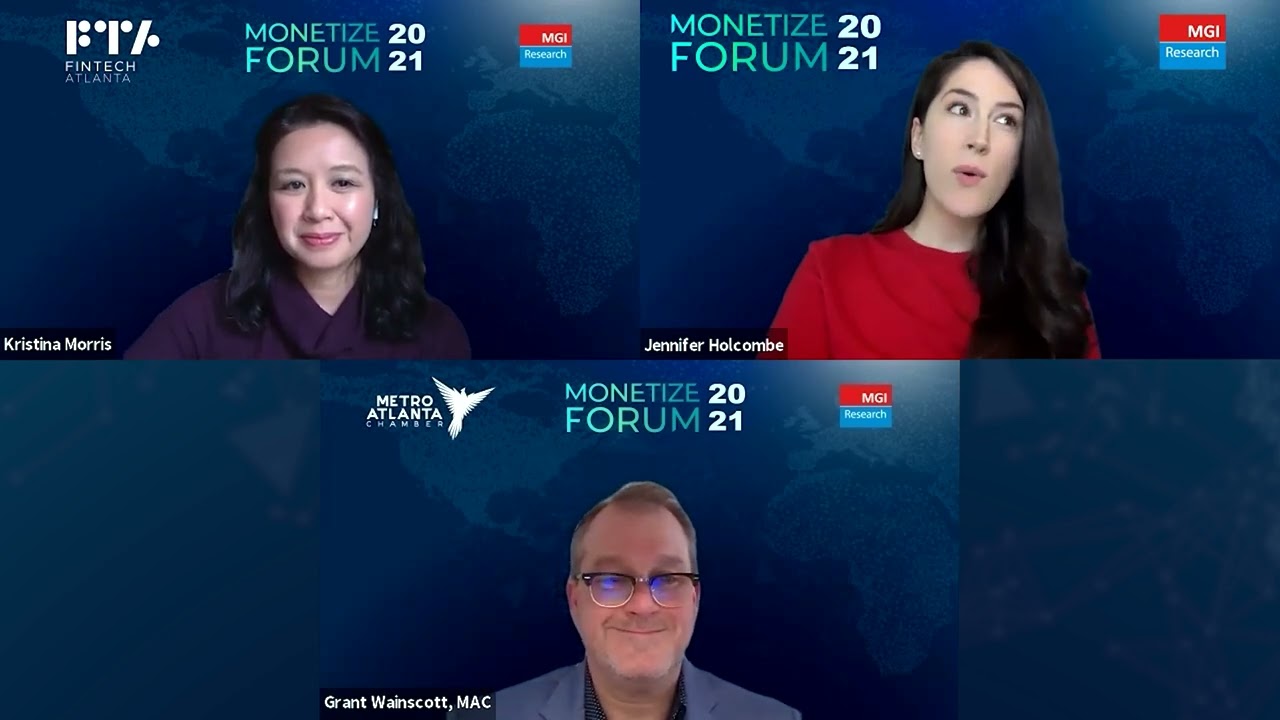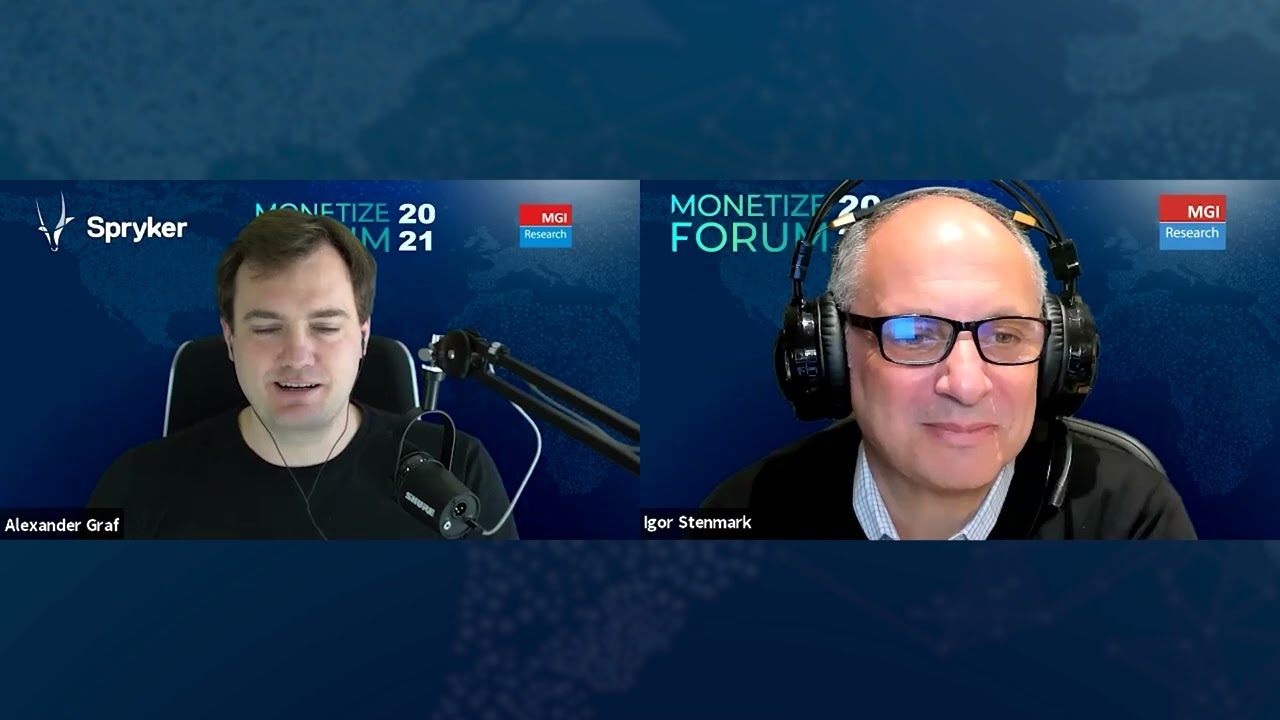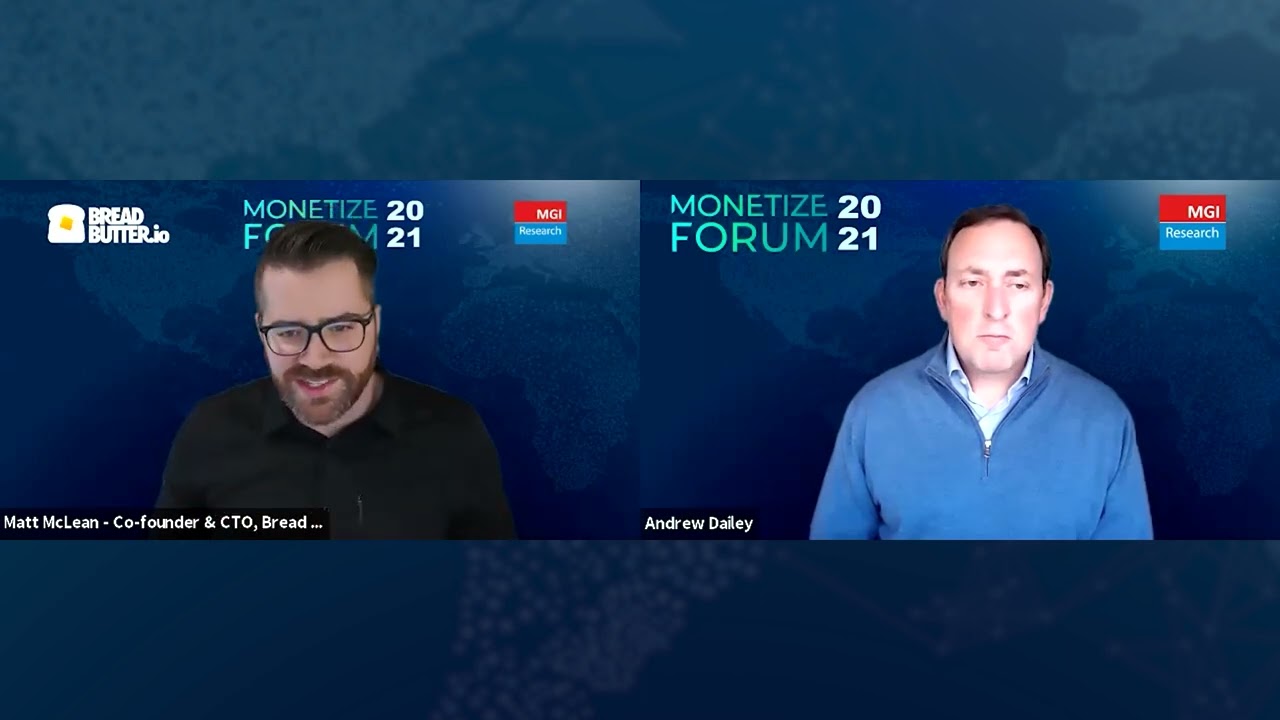As a relatively new development, payments orchestration is an often misunderstood and underestimated layer of the payments technology stack. However, with many businesses now realizing as much as 100% of their revenue online, establishing a stable and cost-efficient payments system is becoming more and more of a priority across all industries. We brought together five subject matter experts to discuss the emerging trends and benefits of payments orchestration at the 2021 Monetize Forum. MGI Research analyst Matthijs Koorn moderated our panel with Sunil Jhamb, CEO of WL Payments; Lennart Koopmans, CEO of Magnius, Peter Mollins, Vice President Marketing for Spreedly; Lochan Sim, Vice President Partnerships & Strategic Sales for optile (Payoneer); and Adam Vissing, VP of Sales & Business Development for IXOPAY.
Key Issues
What is payments orchestration?
What kinds of new players and buyers are entering this market?
What are the less understood but significant benefits of a payments orchestration platform?
Guest Profiles
Sunil Jhamb, CEO of WL Payments
Lennart Koopmans, CEO of Magnius
Peter Mollins, Vice President Marketing for Spreedly
Lochan Sim, Vice President Partnerships & Strategic Sales for optile
Adam Vissing, VP Sales & Business Development for IXOPAY
Matthijs Koorn
Good afternoon, everyone. I’m joined here at the Monetize Forum by no less than five experts for our panel discussion on the theme of payments orchestration. I’m joined by Adam Vissing from IXOPAY, Sunil Jhamb from WL Payments, Lochan Sim from optile (Payoneer), Lennart Koopmans from Magnius, and Peter Mollins from Spreedly. Gentlemen, good afternoon.
Lennart Koopmans
Hello.
Lochan Sim
Good afternoon.
Peter Mollins
It’s great to be here.
Adam Vissing
Happy New Year.
Matthijs Koorn
Yes, Happy New Year to everyone. Let’s dive straight into it. As I said, payments orchestration is a relatively new development in the payments industry, and there are a lot of definitions floating around. I’m of the opinion that it’s a purely gateway functionality that switches payments according to settings or an algorithm, that pure orchestration is acquirer/processor-agnostic, and that the company you contract with does not even offer that in-house. Any thoughts on that definition? Adam, would you like to go first?
Adam Vissing
I’m happy to kick it off. I think you’re right on the money with the independence topic in the sense that payments orchestration vendors should not be involved in any sort of actual money flow processing or acquiring themselves. From a platform perspective, it’s really two things at once: a technical consolidation integration platform for end-to-end payments processing and also a business process orchestration platform. So, it’s something that business users within an organization will work with on a daily basis, whether that’s in treasury, risk management, or e-commerce processing. As you said, these platforms are relatively new. I (and probably many others here today) am not a big fan of the “gateway” term, simply because it’s a muddied term. I think that’s why we’re all talking about payments orchestration today.
Matthijs Koorn
Okay. I think that’s a good nuance to point out. Peter?
Peter Mollins
I was just going to build on Adam’s point about that business angle, which I think is really important. When we think about payments orchestration, we often think about merchants, platforms, marketplaces, and other payments services that are out there. They want to grow into new markets, optimize their transactions, and really deliver a great customer experience. So, like Adam said, you should think about it from that business perspective, and every business is going to be different in terms of payment strategy, maturity, et cetera. I think one of the great things about orchestration is being able to recognize those differences and build the right strategy with the services that match your priorities as a merchant marketplace platform or service provider.
Sunil Jhamb
Absolutely. I would echo that payments orchestration should not be touching the money. In order to give an unbiased view, you need to have an independent position and not be tied to any acquirer. The acquirer-agnostic approach is the one which usually helps merchants route their transactions to where they get a better success rate. The payments orchestration needs to present the health checks and challenges which acquirers face and then independently help merchants make their decision.
Lochan Sim
I’d like to add to that. The discussions that we have here are centered around the idea that a business can benefit from any tool or process we can bring as an orchestration platform to help them manage multiple payment providers and fraud providers. That encompasses the single payment page, single token vault, and smart routing. It also covers the single way to refund across any provider as well as reconciliation, chargebacks, and all of those other aspects. Really, you can expect your orchestration platform to offer any tool or process that is, as you said, agnostic and allows you to manage these multiple providers.
Matthijs Koorn
Lennart, would you like to share any thoughts?
Lennart Koopmans
Yes—almost everything that was already said, of course.
Matthijs Koorn
Yes, I was going to say that the grass has been cut for you!
Lennart Koopmans
Well, as Lochan mentioned, reconciliation is also very important for a lot of merchants—understanding which money comes from where and having a good administration in place. So indeed, we have a great future in front of us with payments orchestration because we’re going to extend our platforms and optimize things for merchants like reconciliation and administration.
Matthijs Koorn
Staying with you, Lennart, besides the acceleration of going online, have you seen the last 12 months of the pandemic bring any other changes from a payments orchestration perspective?
Lennart Koopmans
In general, the pandemic meant a big increase in the number of transactions but also a slower decision cycle as it’s a little bit more difficult to get clients on board. We are still seeing a large number of transactions in this space, though, and I think it’s really because people in the business understand payments a little bit better and that they don’t want to be dependent on only one company. They want to be flexible, and they increasingly understand the power of using a payments orchestration platform, not only to reduce the transaction fees but also, as Sunil said, to optimize the conversion rates and reduce fraud. Because their knowledge in this area is increasing, the merchants are recognizing the benefits of our new way of business.
Peter Mollins
I think Lennart is right. That flexibility is such an important theme that we hear from the market, and then, with the pandemic, people are accelerating their moves. There’s a lot of either trying to replicate what they’re doing offline or trying to pivot and move to an online world. Flexibility becomes super important because you want to be able to provide that great customer experience that was expected in an offline world. You want to provide the same or similar heightened optimization. The pandemic has accelerated the need to get there on a shortened timetable. I just wanted to echo that.
Lochan Sim
We serve some customers who are having to be flexible because of this acceleration. One that comes to mind was previously quite happy waiting for their current provider to get a solution in Brazil, but with the pandemic, the volumes and reliance on e-commerce revenue were too important for the company. Instead, they decided to find a local provider that would get them where they needed to be quickly.
The other side of that is the companies that had previously built orchestration platforms and are now saying, “Actually, we can’t keep up with the pandemic ourselves. This isn’t the core of our business, and we now have an 18-month backlog trying to do things in-house. How can we accelerate that?” That might mean they look at buying a solution. It seems to be becoming a pretty common trend across those platforms that were previously built in-house.
Adam Vissing
I’ll add that one point which gave a huge boost to the orchestration space in the last year, beyond the pandemic, is that every company had to increase its digitalization efforts, regardless of industry. A lot of technology vendors across the entire e-commerce space have been—I hate to say benefiting, but they did see massive growth over the last year.
One aspect I thought was crucial was what happened to a very large German PSP around the middle of the year because it sensitized many people to the fact that even very large companies are sometimes not too big to fail. This was a hard lesson for some very, very large companies out there that had put their entire payments processing into the hands of maybe one or two vendors and suddenly saw revenue streams cut off at the worst possible time: in the middle of a pandemic that was forcing people to stay at home. So, I think that multiple factors came together last year to increase interest in the space we’re all in.
Lochan Sim
I’d say that. We’re a user of Slack, and we saw its challenges earlier this week. It’s not just payments, right? It’s Google, Amazon, et cetera as well.
Sunil Jhamb
Absolutely. Last year, we did experience a lot of growth due to the pandemic—organic growth of people shifting from offline to online. However, we also saw our business growing due to Wirecard, “the German provider,” going bust (We don’t need to mince words; we can just say their name because the whole world knows). A lot of customers came to us because they had put all their eggs into one basket, and when Wirecard was going down and Visa and Mastercard shut down for a week, all their payments were suddenly gone. As a result, their businesses were shut down.
On a Saturday night, a friend called to tell me a company needed their payments orchestration set up because their merchants couldn’t process anymore. As this was COVID time, there was a lot of business coming in, but zero payments were happening. By Sunday afternoon, we got the payments orchestration and white label set up, and they were integrating by Monday. On Thursday, they were back in business. But that was a very hard way to learn not to put all their eggs in one basket, and there were many other merchants during that time who came to us for the same reason. So, it wasn’t just the pandemic which helped grow the business; it was also people realizing that working with one provider just won’t cut it.
Peter Mollins
That’s really interesting, Sunil, because one of the things I think it accelerated was this notion that payments becomes more of a strategic focus for companies as they’re moving more and more of their business online. If you think of it in terms of ERP systems, you could just buy an ERP system and plop it down, but as you recognize its importance to your strategy, you then want to tune it to be specific to your own business requirements. I think there’s a parallel here with payments where, as you get more and more mature, you want to have that tuning to match your business priorities.
Matthijs Koorn
To follow up on that, Peter, do you see a different buyer now than you saw one to three years ago?
Peter Mollins
Yes. I’d be interested to hear the perspective of my colleagues here, but we’re really seeing a lot more payments teams coming to the fore. If you were to look on LinkedIn two or three years ago, you might see payments more in the context of accounts receivable. Now, however, you see entire teams and frequent job postings for directors of payments. So really, there’s a lot more emphasis on payments within companies.
Matthijs Koorn
Is that something others are seeing as well?
Lennart Koopmans
Indeed. We see not only merchants’ experience with payments picking up but also other companies trying to become PSPs themselves in emerging markets. Local banks and players see the opportunity to help their current clients with online payments, so they want to extend their business and become PSPs. That’s a really interesting change that I see in the global markets. While many merchants don’t want to put all their eggs in one basket, the smaller merchants don’t mind. You see a lot of new companies wanting to do online business, and they need to be serviced. For a player to be able to do that, they need to have a PSP platform as well. So, we see a lot of companies with a good platform and white-label solution onboarding all those merchants, and in the back, they can orchestrate the payments as well. That’s a little bit of a different approach than pure payments orchestration for merchants, but it’s a way we’re seeing new kinds of clients coming to these markets.
Adam Vissing
I’ll just add a few thoughts on what Peter said. In my job qualifying new opportunities and leads, the presence of someone with a “director of payments” or “head of payments” title within the organization that’s contacting us is always a good indicator that the organization has reached a certain level of maturity. They recognize the challenges they’re facing and are better informed about what they are looking for. Of course, that makes all of our jobs easier, and it also increases their potential to actually improve on their current situation and grow ROI.
That said, I would still say there are many different kinds of buyers in this space. Very often, especially with historically grown setups, buyers are coming from IT organizations. They’re the poor sods at the very end of the decision chain who have to deal with all of these integrations on the technical level, and they’re just seeking to ease that pain. Additionally, typical buyers naturally include treasury departments and accounts receivable departments that are facing trouble with reconciliation across sometimes 50 or 60 different providers worldwide. So, there’s a wide range of buyers, but we definitely do see a very strong trend in Europe of payments professionals, people with background from the payments industry, moving into merchant organizations and bringing that know-how with them. Knowing all the ins and outs, they’re looking for solutions that will help them maybe make use of the minute differences in pricing, service levels, and feature sets that different providers are offering—in a platform which, as you said, is agnostic.
Sunil Jhamb
Yes, exactly as Adam and Lennart mentioned, we do see a very interesting change. One of our partners joined us after having their own development going for many years. They finally gave up because they couldn’t keep up with the development (they lost their lead developer or something else happened), and they lost a lot of money. So, they decided to use WL Payments as a white-label solution, allowing them to focus mainly on the acquiring side and servicing their merchants while staying away from technological challenges.
As Adam said, a lot of payments professionals are getting into merchant servicing. They want to service merchants on the commercial side, having a relationship with the acquirers and so on, but they don’t want to handle any of the technology elements. Especially with 3DS2, there was a big challenge in upgrading the APIs for a lot of these other acquirers who still weren’t ready. We see a shift towards cohesive partnerships being formed. Now, there are payments professionals who want to focus on the merchants, the sales side, and merchant services and let a partner take care of all the upgrading of APIs and technological challenges—new features, reconciliation, payment orchestration, et cetera. That’s where we see a trend in the market.
Peter Mollins
I’ll just add to what you’re saying, Sunil. It’s interesting that accelerating pace is really a driver that we see. For merchants, it may be accelerating in terms of time to market; they want to get to market quickly. On the platform side, they’re looking to onboard new merchants themselves, so the accelerating pace means there’s a limit on their ability to grow unless they can quickly add connections to other PSPs.
Matthijs Koorn
On that point, Peter, we’ve seen new buyers, and we’ve seen new buying reasons. Have we also seen a different expectation in terms of ROI?
Peter Mollins
I guess I come back to the customers themselves. As maturity increases, I think there’s just that diversity of need because each company and their go-to-market strategies are so different. The diversity question keeps coming up. What is the ROI that’s demanded? I think there are a number of different categories of ROI for sure: things like optimization, as Sunil mentioned, and things like time to market, as Adam and Lochan talked about. I think it just varies. There’s a continuum for different players because every company is going to be unique, and that’s kind of where payments orchestration came from in the first place.
Lochan Sim
I fully agree with Peter. It just depends on what the needs or ROI measurements are for each of the individual companies. I think we’re seeing a bit more of a focus this year or last year around what the ROI should be. They’re not going out to buy this just saying, “Yeah, this is going to fix all of our issues.” They’re now asking, “If we’re going to do this, is it going to meet our initial goal? And then, we have two or three sub-goals that we really want to hit as well.” I think previously, you might have had a head of payments or director of payments who was really the one focusing on that. Now, we’re actually hearing the CFOs and CTOs in the rooms asking, “Hey, is this hitting the ROI that we want it to?” because it’s becoming such an important factor of their business.
If 100% of your revenue comes from online and your main goal is to reduce net payments costs by X amount, that’s going to be something you end up putting in your financial reports at the end of every quarter. I think that’s now where those companies are recognizing the value and saying, “Right, this is such a strategic initiative. We need to focus on this.” We’re seeing that a lot but, as Peter said, it really still varies based on maturity in other aspects. On the other extreme, for example, we had a customer who ended up getting an incentive from one of the schemes which paid for the costs of an orchestration platform multiple times over, and that was as far as they needed to go in terms of an ROI. So, it really varies depending on the type of customer.
Lennart Koopmans
Yes, that’s right. A lot of companies start out with a payments orchestration platform because they focus on the ROI, and that’s fine. However, I think merchants should be made more aware of the fact that increasing the approval rates will give them a lot more revenue as well. Unfortunately, I see a lot of them focusing only on the reduction of transaction fees or on adding new methods in other countries. Those are, of course, two major reasons to use payments orchestration, but I believe that the really exciting benefit is increasing the approval rates which will add a lot more revenue. That’s not totally understood yet, so I think we have a role to play in this discussion to explain a bit more about these kinds of improvements that can help them.
Adam Vissing
Piggybacking on what my colleagues have already said, something that I tell all of my clients is that one aspect of payments orchestration (which I think all of us cover) is centralized organization of payments instruments, be that credit cards or other types of payments instruments. When people think, “I need to increase conversion; I need to grow my topline and have more revenue,” many of them are hoping for payments orchestration topics such as smart routing to significantly lower their fees.
The reality is that once you have control over your customers’ credit card data, you can go to your main acquirer in any given region at the end of the year and just ask them, “What have you done for me lately? Your biggest competitor is offering me a better deal—a couple of basis points less—and this is my volume. It’s an easy decision.” You don’t have to do any sort of smart routing for that. You just need to make one well-timed phone call and let your acquirer know that you have something at your disposal that lets you instantly shift your volume somewhere else if you feel you would get a better service or a better rate.
That possibility alone is often enough to shave a lot of fees off of yearly transaction processing costs. So, I think there are many ways to increase ROI, but as most of my colleagues said, the ROI that I achieve will really depend on the maturity level I’m at, what kind of business I’m in, whether I’m super sensitive to cost, what my average transaction value is, and so on. It will depend on so many factors that it simply wouldn’t be serious for me or anyone here to tell you, “It’s going to be 127.5%.”
Sunil Jhamb
Actually, we see ROI from our side as well. We always tell our customers that the whole objective for us is that we grow when they grow; it’s as simple as that. That’s in our DNA and written all over our walls. When we align our interests like that, the ROI discussions go away, and the talk centers around how we can grow together. That idea that, ultimately, if I can help you grow, I’m helping myself in the process resonates better with our customers, so we don’t have as many discussions around things like price. Rather, customers ask, “How can we grow? How can you help me get 5%? Now, how can we get to the next level? How can we optimize this? How can we get to a new market?” They involve us in the planning, and it becomes a joint effort looking at strategy and direction. This is where we help them—based on the growth they’re expecting, if there are new features they’re looking to have developed, et cetera. We align our interests with theirs, and then we all enjoy returns on the investment.
Matthijs Koorn
Thank you very much, Sunil. I think those are very good final thoughts. I’m afraid time, which was our enemy from the beginning, is up, but many thanks to Peter, Lennart, Lochan, Adam, and Sunil for being on the panel. To all the viewers and listeners, all the panelists will be on the platform, so feel free to contact them with any questions. Gentlemen, thank you very much.
Peter Mollins
Great. Thank you.
Adam Vissing
Thank you.
Lochan Sim
Thank you, Matthijs.
Sunil Jhamb
Thank you.
Lennart Koopmans
Thank you.





